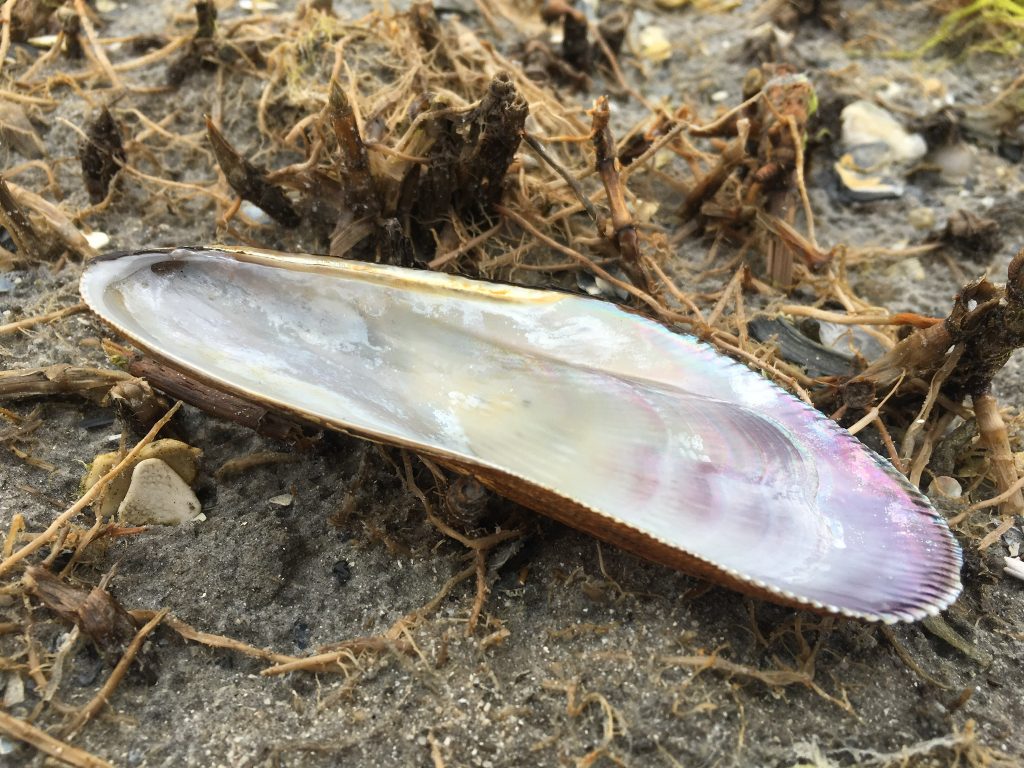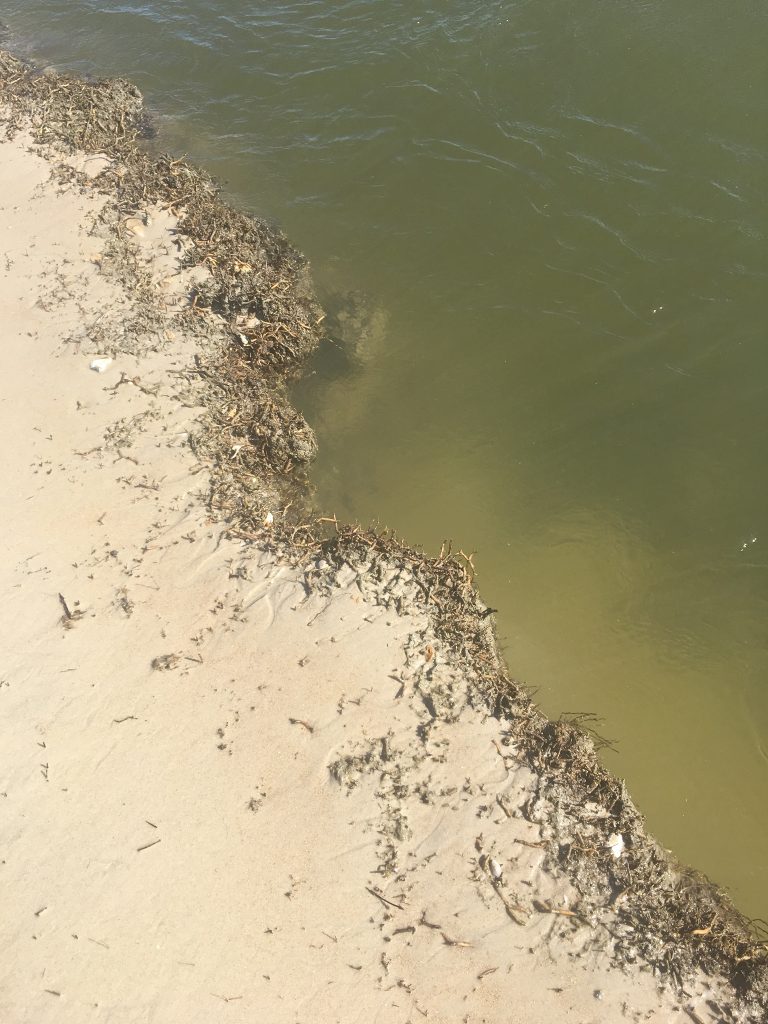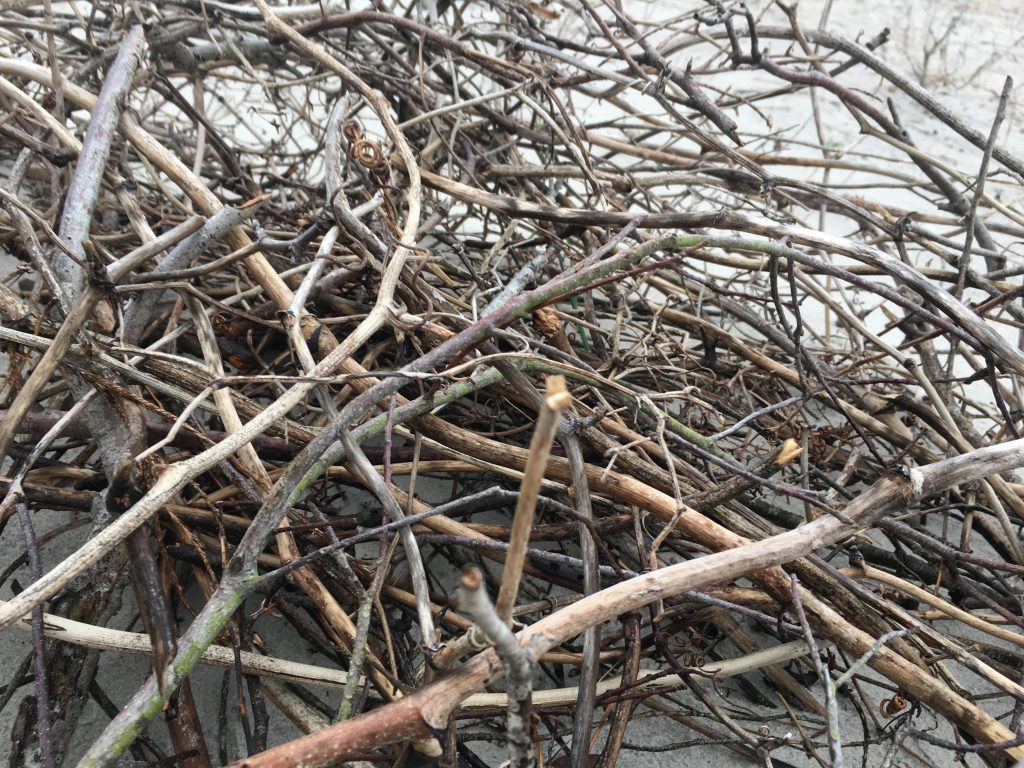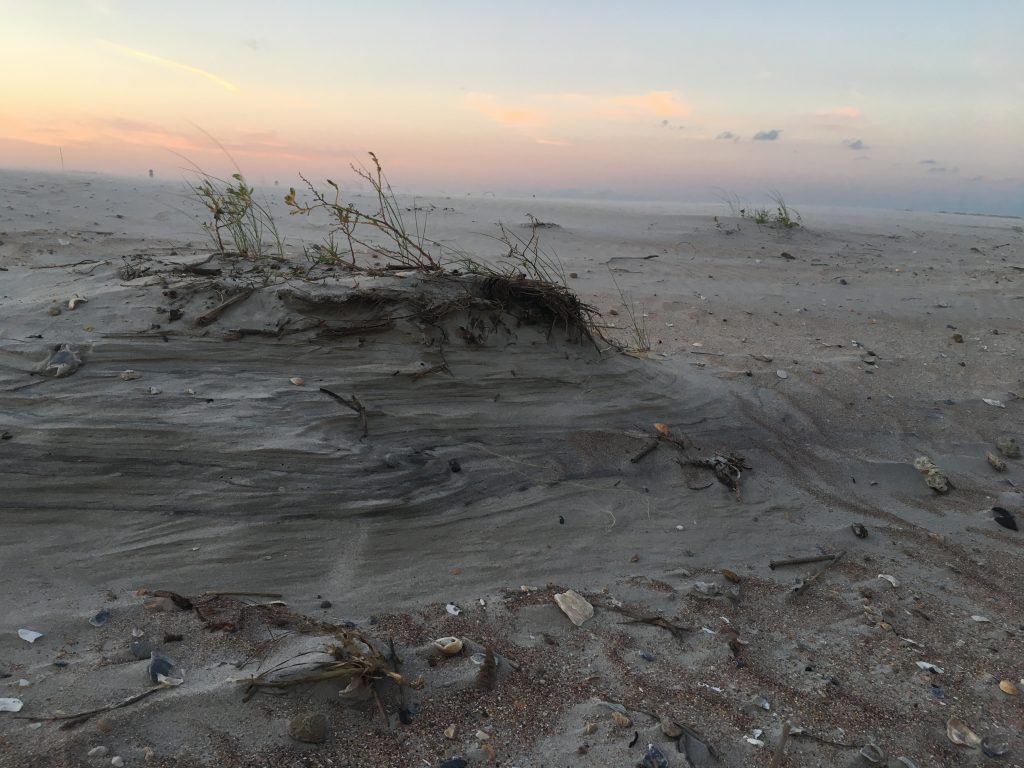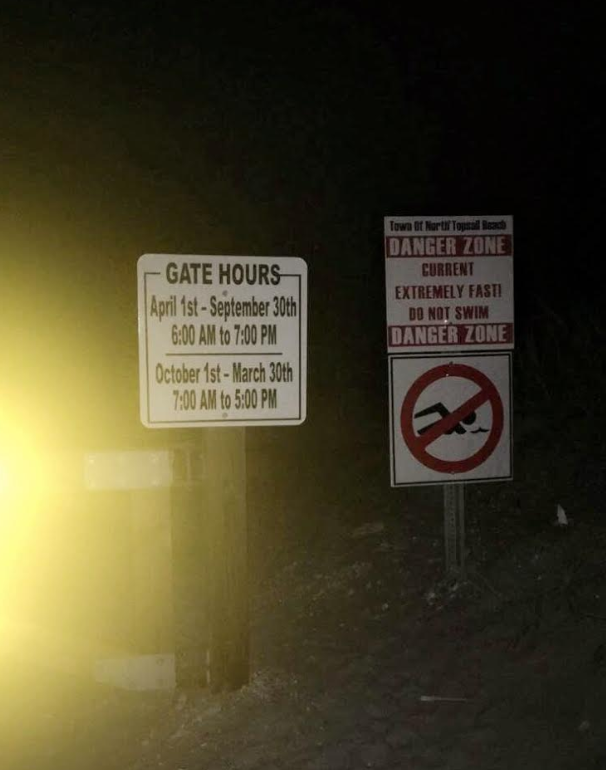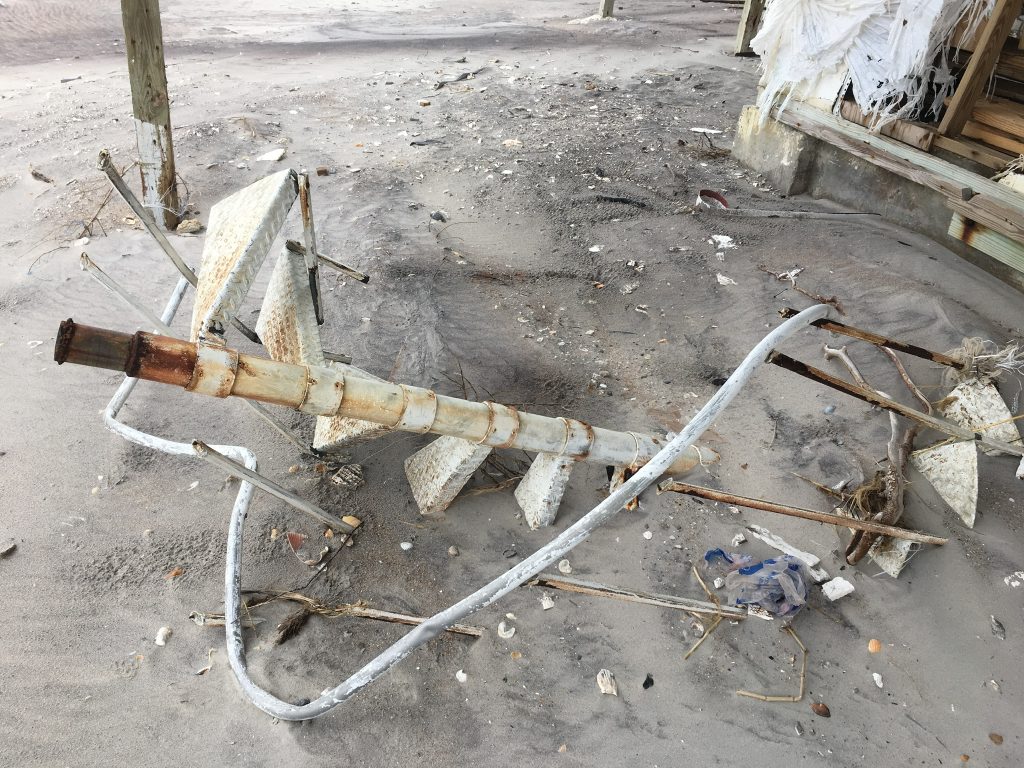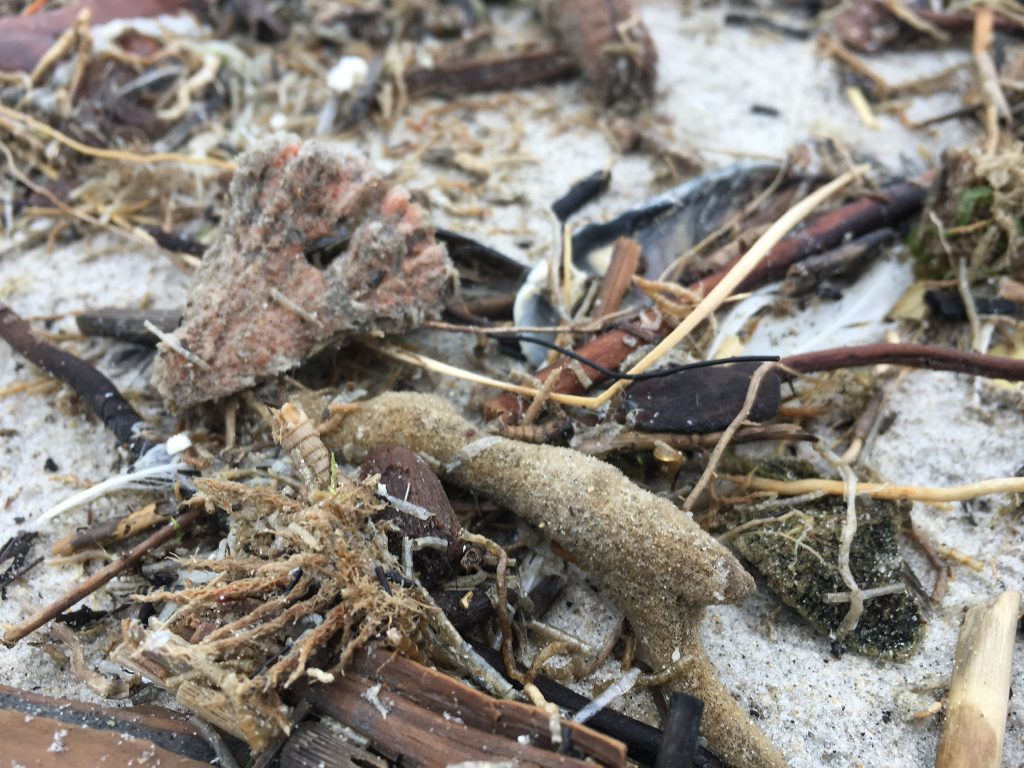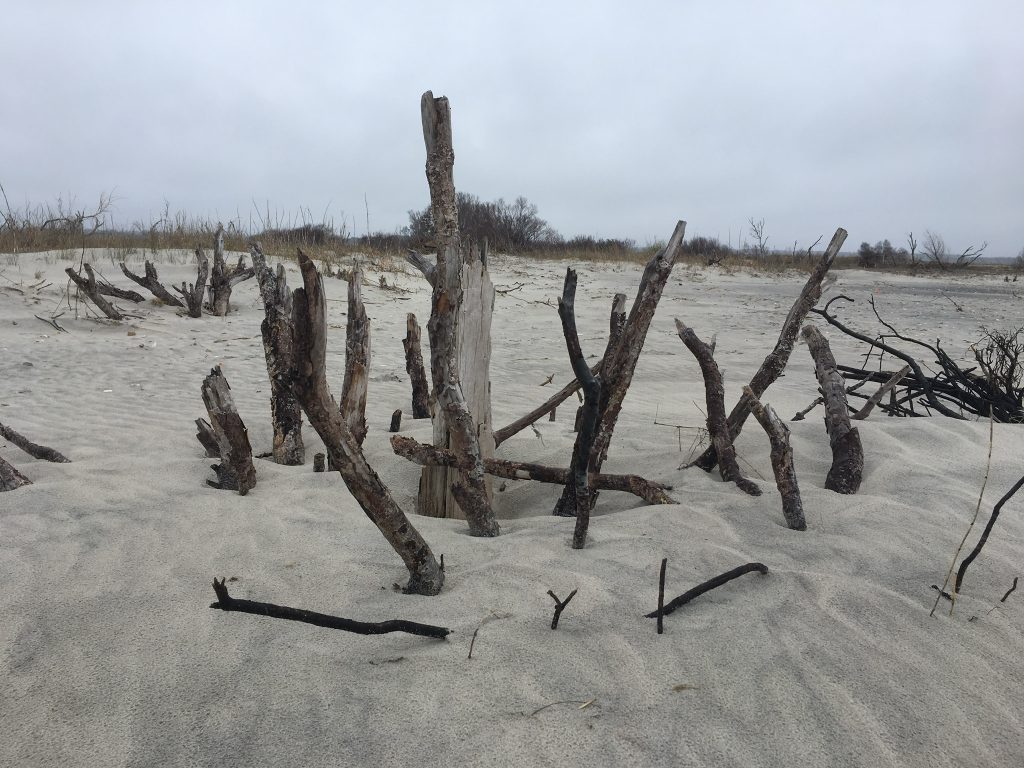The sea changes before the sky. White caps explode throughout the water, leaving the ocean a churning mess of gray and brown. Birds have long since departed. The current is willpower embodied. Next, the air comes to life, like a breath held and all at once released with a seemingly infinite surge of power; the winds come from all directions, some hot, others cold, all entangled in a swarm of sand blasting this way and that. At last, the clouds begin to roll in. Their bulging bodies swollen with rain, they hang heavy and ripe as they encase the sky.
Fat drops pummel the windows in splatters and streams as I make my way outside. Pellets of rain sting my skin and make a sound like static, that soon evolves into white noise as one mass of water merges with another. The distinction between ocean and sky is warped as I ease myself into the waves. I am tugged, elbowed, and punched by the sea, but it is a welcomed relief from the storm infused rain that seems to try with all its might to shred and bruise my skin.
Water on water on water on water, the crashing, kicking, stomping screams “CHSSSSHHH!!SSCCCHHH!CCHHCHHSSSHHHH!!!” I plunge myself into the growing crescent of a passing wave—quiet washes over me. The contrast is so severe, at first, I hear nothing. Gradually, the muted rumble of waves and soft pitter-pat of rain reaches my ear; beneath them both, the tinkling of shattered shells and smooth stones dancing together on the ocean floor. I remain. Light. Peaceful. Until, the grip of necessity clasps my lungs and I am forced to emerge.
The clamor surfaces along with my head, this time accompanied my a long groan that turns to a rolling roar as I listen. Submitting to the rule of thumb—if you can hear thunder, you can be struck by lightning—I stumble out of the raging sea, pushed along by a scattering of waves. My swim may be short lived, but I prefer that to the conception of death.
Trudging through the storm, I hear the ocean throw itself against sandbags stacked eight feet high, angered by its confinement and eager to break free. When my neighborhood was erected in the early 80’s, no such barricades were required to keep homes safe from the water. They stood a reasonably safe distance of 50 yards from the sea, with precautionary dunes that grew with every passing year. Even I can recall in my younger years when the dunes rose so high I was unable to see the beach from my second story window. But in the past five years, erosion has grown increasingly worse, aided by the hasty dredging of marine vessels and the fact that sand was taken from in front of our home in order to fill sandbags that would be placed further south.
Of course, with a house on the island, no one is truly safe, no matter how far the ocean may seem. Even if it isn’t the waves that rip through your home, a storm’s reach is lengthened by vicious winds and downpours. Many say we were foolish to have bought land here; they do not know what it was before, nor do they understand how quickly nature can change.
